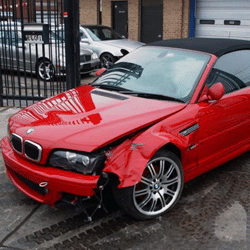Driving at night on dark and winding roads can be dangerous. Your vehicle’s headlights are your only guide that let you know and see what the road ahead looks like. It is of vital importance that you ensure they are working well and that you keep them clear. One of the biggest problems with headlights is that they can get foggy due to the intrusion of moisture into the headlight assembly.
Moisture finds its way into the headlight by way of cracks, leaks, or inadequate seals. The trapped moisture results into interior condensation which discolors and clouds up the inside of the headlights. When the headlights get foggy, the nighttime visibility is immensely reduced, creating a safety hazard. With the following simple steps, you can keep your vehicle’s headlights crystal clear and prevent future instances of fogged headlights.
- Determine if trapped moisture is causing headlight fogging by shining a light through your vehicle’s headlight at an angle. If so, there is a high probability that there is a crack or leak that needs to be addressed.
- Disconnect the electrical connection at the back of the headlight before removing the headlight assembly from the vehicle. Use a Phillips screwdriver and a ratchet to loosen the two or three bolts that are keeping the headlight in place. Pull the headlight and wipe away the moisture on the outside of the headlight with a clean cloth or towel. Lay it face down and use a hairdryer set on high heat to dry out the inside of the headlight by blowing hot heat through the socket. If the headlamp is sealed, use the hairdryer to warm the headlight and dissipate the fogging. Be sure to periodically aim the hairdryer to different sections so that you don’t melt the plastic. If you are not in a hurry, you can leave aside the headlight assembly overnight to dry, that would be an easier and safer way to completely remove the moisture.
- Once thoroughly dry, examine the headlight assembly for any cracks, leaks or holes. The cracks can be patched up by applying clear urethane sealant or similar waterproof hi-tack sealing agent along the full length of the crack, inside and outside the headlight. Inspect the seal around the headlight bulb socket for deterioration. Coat with silicon spray to ensure a good seal when the bulb is replaced or apply Teflon tape if necessary. Make sure the tape is tight to prevent moisture from entering the headlight through cracks and gaps within the rubber socket seal.
- Replace the bulb and insert the headlight assembly back into the body of the vehicle. Likewise, replace the bolts or screws to secure the headlight. Reconnect the electrical connectors and test the lights by turning them on.
- For the outer surface, wash and clean the headlight with a glass cleaner which usually contains ammonia. The glass cleaner should remove the oil and dirt buildup causing the fogging. Then, apply quality car wax to restore luster and brightness to the headlight.
- If the fogging on the headlight’s outer surface is not removed, use a headlight restoration kit. It usually contains the necessary chemicals to remove the stubborn layer of dirt on the headlight.
- Apply a surface protectant, such as plastic protectant, to the headlight. It will shield the headlight from UV damage and oxidation, and provide a buffer between the headlight and any road debris.
- To protect the headlight and prevent fogging, reapply the car wax, plastic protectant or restoration product regularly. This will extend the life of the headlight and ensure it stays clear and bright.




 Follow
Follow

